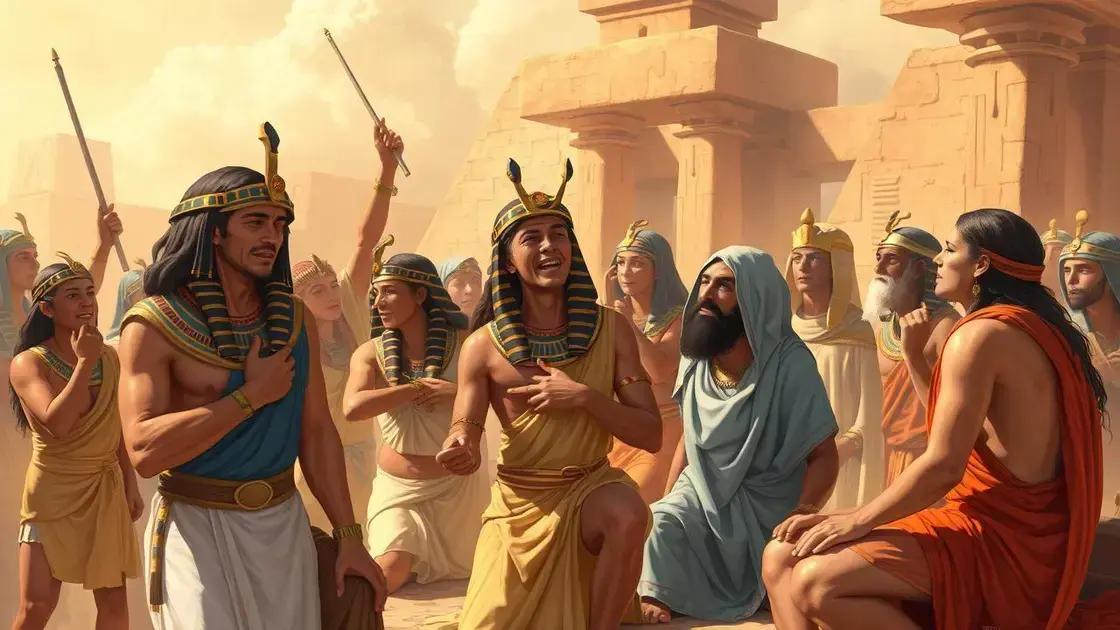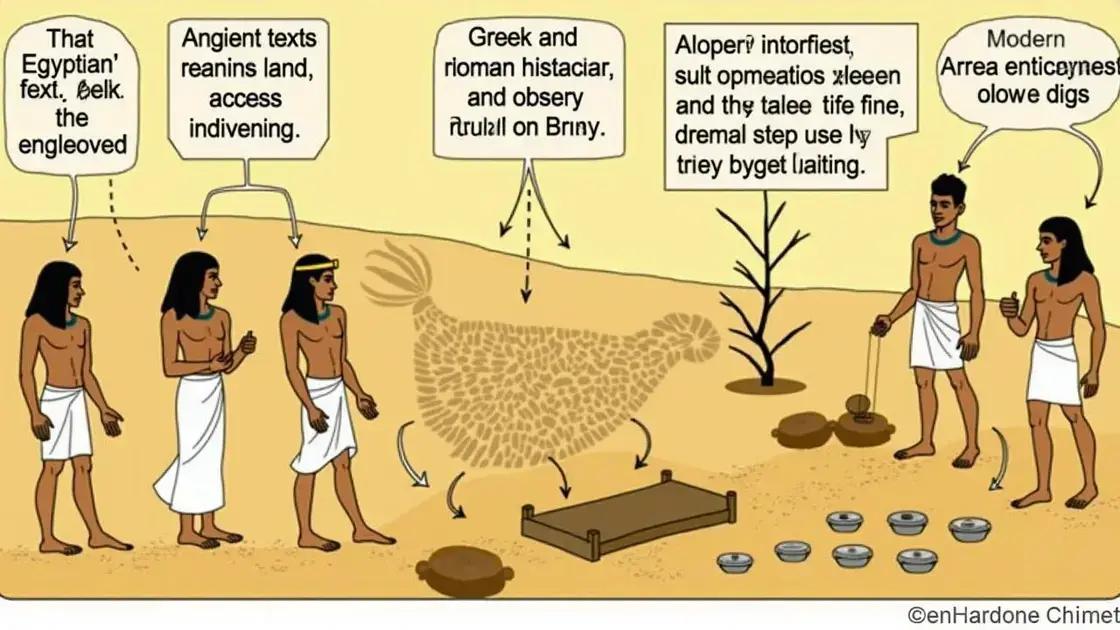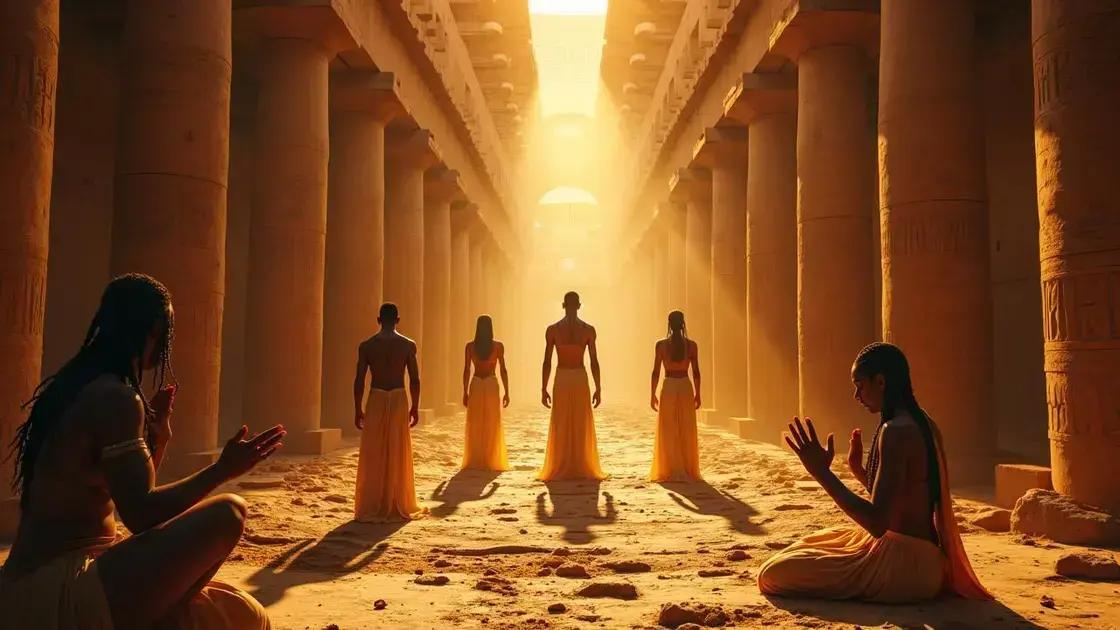The side effects of the Trick of the Egyptian Pharaohs include psychological impacts such as anxiety and confusion, physical reactions like fainting, and social consequences like reputational risks, reflecting their complex interplay of magic, religion, and politics in ancient Egypt.
The Trick of the Egyptian Pharaohs has long been shrouded in mystery and intrigue. Many seek to understand the side effects of these ancient practices, which have fascinated historians and enthusiasts alike. From the tales of hidden knowledge to the unexpected consequences faced by those who partook in these rituals, the allure remains strong. In this article, we will explore the intricacies of these effects on both ancient and modern perspectives.
Understanding the Trick of the Egyptian Pharaohs

The Trick of the Egyptian Pharaohs refers to various ancient practices and rituals associated with the powerful rulers of ancient Egypt. These practices often involved a mix of religion, magic, and politics, which were intended to maintain order and demonstrate the Pharaohs’ divine authority.
Religious Significance
Religion played a critical role in the lives of Pharaohs and their subjects. The Pharaoh was regarded as a god on earth, serving as a mediator between the gods and the people. Rituals performed were believed to secure favor from the deities, ensuring prosperity and harmony within the kingdom.
Magic and Rituals
Magic was commonly woven into the fabric of these ancient practices. Pharaohs employed magicians and priests to perform skilled rituals that were believed to manipulate the forces of nature and the cosmos. These tricks were integral to maintaining political power and were often shrouded in mystery.
Political Control
The Trick of the Pharaohs also included methods of exerting political control over their subjects. By presenting themselves as divine beings, Pharaohs could inspire loyalty and obedience. This control was often maintained through a network of bureaucrats who enforced laws and collected taxes, ensuring the Pharaoh’s rule remained unquestioned.
In summary, understanding the Trick of the Egyptian Pharaohs helps us recognize how intertwined religion, magic, and political strategy functioned in ancient Egyptian society. The influence of these practices extended beyond the Pharaohs, shaping the lives and beliefs of the people in profound ways.
Common Side Effects Encountered

When exploring the side effects of the Trick of the Egyptian Pharaohs, several common experiences were frequently reported among those who engaged in these ancient practices. These side effects varied depending on the rituals performed and the cultural context in which they occurred.
Psychological Effects
Participants often reported psychological effects, such as heightened anxiety or confusion. Engaging in mysterious rituals could lead to feelings of fear or unease about the unknown. The pressure to conform to societal norms may have increased stress levels among individuals.
Physical Reactions
Physical manifestations were also common. There are historical accounts of participants experiencing discomfort, fainting, or even nausea after intense rituals. These reactions were likely caused by the combination of physical exertion, emotional stress, and perhaps even the environment in which these practices occurred.
Social Consequences
Engaging in the Pharaohs’ tricks could also lead to social consequences. Those who were perceived as participating too fully in esoteric practices might have faced criticism or ostracism from their community. Social standing was important, and deviation from accepted customs might result in negative repercussions.
Cultural Perceptions
Some participants described a shift in cultural perceptions. The rituals were often viewed with reverence, leading to a change in how individuals viewed their place within the society. This newfound respect could elevate one’s status, making them more influential but also susceptible to envy from others.
Historical Accounts and Interpretations

Throughout history, many accounts have chronicled the practices of the Egyptian Pharaohs, including their tricks and rituals. These records come from various sources, including ancient texts, hieroglyphics, and the writings of historians from different cultures.
Ancient Texts and Papyrus
One of the major sources of information about these practices comes from ancient Egyptian texts written on papyrus. These scrolls detail rituals performed by the Pharaohs, including the intended outcomes and the side effects experienced by participants. The texts often mixed religious beliefs with practical applications of magic and healing.
Greek and Roman Accounts
Greek historians like Herodotus and later Roman writers provide external perspectives on Egyptian practices. Their interpretations often reflected their own cultural biases and misunderstandings. For instance, Herodotus frequently described the mystique of Egyptian rituals, presenting them as both fascinating and dangerous.
Modern Archaeological Interpretations
In recent years, archaeologists and historians have re-examined the evidence using modern methods. They analyze artifacts and ancient locations to understand the physical and social contexts of these rituals. This research provides new insights into how the Pharaohs’ tricks influenced not only their followers but also their enemies.
Influence on Pop Culture
Today, the idea of the Egyptian Pharaohs and their tricks continues to influence popular culture. Movies, books, and games often depict these ancient practices as magical or mystical, sometimes distorting the historical realities. Such interpretations can create misconceptions about the Pharaohs’ true practices and the actual effects of their rituals.
Modern Reflections on Ancient Practices

In today’s world, the ancient practices of the Egyptian Pharaohs are often reflected in various ways. Societies around the globe find inspiration in these timeless rituals for personal and spiritual growth.
New Age Spirituality
Many people today explore New Age spirituality, borrowing elements from ancient Egyptian rituals. Practices such as meditation, dream interpretation, and crystal healing echo the mystical aspects of these ancient methods. Enthusiasts believe these practices can lead to better understanding one’s self and the universe.
Psychological Healing
Some therapists incorporate ancient practices into their treatment, emphasizing the role of symbolism and rituals. This method is seen in art therapy, where Egyptian imagery helps clients express emotions related to past traumas. Such therapeutic practices highlight the relevance of these ancient traditions in modern healing.
Interest in Archaeology
The fascination with the Pharaohs has led to a surge in archaeological interest. Museums showcase artifacts, while documentaries present the mysteries surrounding their lives and practices. This ongoing interest connects viewers to the past, encouraging reflections on ancient wisdom and its application today.
Cultural Representations
Modern media, such as films and video games, depict the grandeur and mystique of the Egyptian Pharaohs, illustrating their magic and power. These cultural representations may inspire awe and curiosity but can also distort historical facts, simplifying complex practices into entertainment.
In Summary: The Lasting Impact of the Pharaohs’ Practices
The practices and rituals of the Egyptian Pharaohs have had a profound effect on history, spirituality, and modern culture. Understanding the side effects and implications of these ancient tricks reveals much about their significance to both their society and ours.
As we reflect on these practices, we can appreciate their psychological, social, and cultural impacts that extend beyond ancient times. From modern spirituality to archaeological interests, the fascination with Egypt continues to inspire.
Embracing these ancient traditions allows us to connect with our past, gain insights into human nature, and explore the mysteries of life that persist to this day.
FAQ – Frequently Asked Questions about the Side Effects of the Trick of the Egyptian Pharaohs
What are the main tricks used by the Pharaohs?
The tricks of the Pharaohs included various practices involving magic, rituals, and divine authority aimed at controlling and inspiring their followers.
What psychological effects were reported by participants?
Participants often experienced heightened anxiety, confusion, and in some cases, feelings of fear when engaging in intense rituals.
How have modern practices reflected ancient Egyptian rituals?
Modern spiritual movements and therapeutic practices often draw inspiration from ancient Egyptian rituals, emphasizing healing and personal growth.
What historical accounts document these practices?
Historical accounts come from ancient texts, writings by Greek and Roman historians, and modern archaeological findings that analyze these ancient customs.
How do modern cultures depict Egyptian practices?
Modern media often depicts Egyptian practices in a romanticized or simplified manner, inviting curiosity but sometimes distorting historical accuracy.
What can we learn from the Pharaohs’ practices today?
We can gain insights into human nature, societal structures, and the influence of spirituality, enriching our understanding of cultural evolution.












